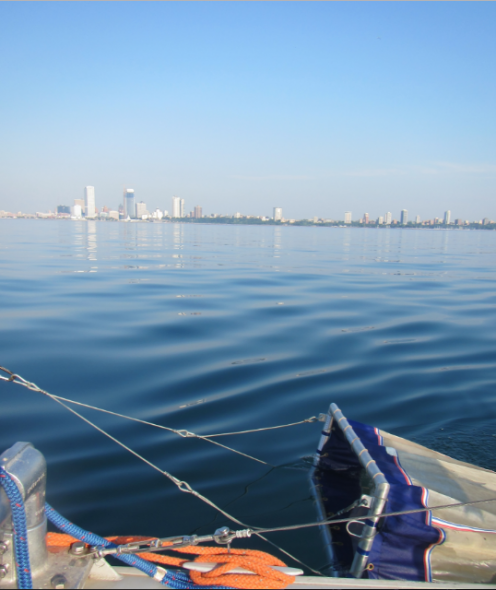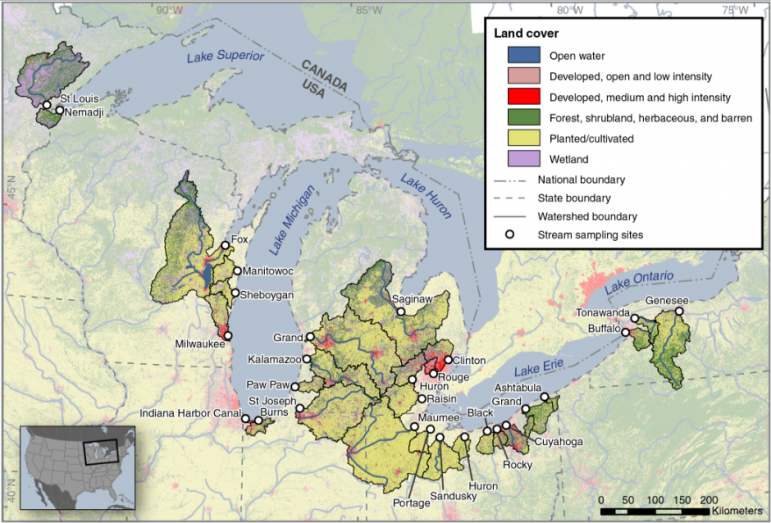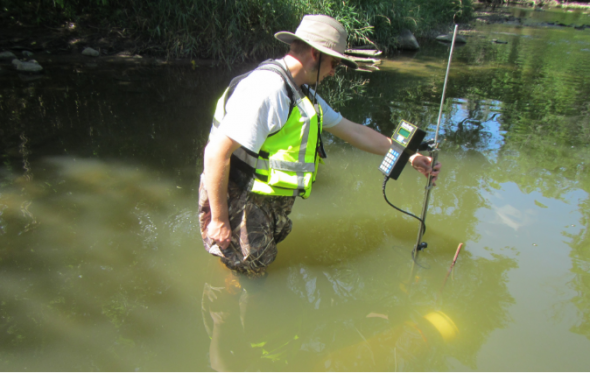Plastic Fibers Polluting Great Lakes
Microplastics a growing problem. MMSD and federal researchers now studying Milwaukee’s harbor.
A recent study found that microplastic pollution in the Great Lakes comes from more than just the beads in consumer products like face wash.
The U.S. Geological Survey (USGS) study also identified three other categories – fragments, foams and fibers. Fragments are broken pieces of larger plastics, foams are filmy materials like bags and fibers include fishing line, rope and other fine materials.
Austin Baldwin, a hydrologist with the agency, led the study to find out if there were multiple types of microplastics and where they could be found. He sampled 29 Great Lakes tributaries during the spring of 2014 and 2015.
“Of those categories, by far we saw the most fibers,” Baldwin said. “About 72 percent of the particles we sampled were these fibers.”
Baldwin expected to find higher concentrations of microplastics near urban watersheds. For the most part, he did. However, fibers didn’t follow any pattern of distribution. They were found in high concentrations in urban and agricultural watersheds.
Further testing will determine what effect the fibers have on the Great Lakes environment.
“They’re definitely ingested by fish and other organisms,” Baldwin said. “Whether that has a real impact on fish health is still being debated in the studies.”
Baldwin’s study was published in Environmental Science & Technology, a peer-reviewed journal. His work has sparked new interest in microplastics – particularly fibers.
Two related studies are underway to help scientists further understand microplastics’ distribution through the Great Lakes. One focuses on Lake Michigan and Lake Erie.
“We’re looking for microplastics in the sediment,” said Steven Corsi, a research hydrologist with the USGS who assisted with Baldwin’s research. This and Baldwin’s studies were funded by the Great Lakes Restoration Initiative, a federal program dedicated to the restoration and protection of the Great Lakes.
Previous studies have focused on plastic that floats on the surface of the water. Corsi hopes to find out which types of microplastics collect where. Fiber concentration is expected to be higher at the bottom of the lakes.
Another USGS study is looking at the Milwaukee Harbor area. Researchers are sampling sediment and water from confluence of the Kinnickinnic, Menominee and Milwaukee rivers. They are also sampling from the inner and outer Milwaukee Harbor area.
This study uses the same gathering nets as used with Baldwin’s study. These nets are placed along a cable that measure microplastics at specific depths. The cable trails behind a research vessel to collect samples.
Peter Lenaker, a physical scientist for the USGS, is doing that research with the Milwaukee Metropolitan Sewer District. He hopes to better understand what is happening to microplastics below the water.
“If you scour the literature, that really hasn’t been done before,” Lenaker said. “Everyone that’s sampled has either sampled sediment or the top of the water column, which can range depending on how people sample. This project will hopefully provide some unique results as to what’s happening through the whole water column.”
Both studies, inspired by the one performed by Baldwin, seek to provide more information about microplastics.
“We’re just trying to collect the best data we can and provide that to the public and policy makers, and they can inform themselves based on that research,” Lenaker said. “There’s a lot that we don’t know about microplastics. So the more we can figure out, the better.”
The highest concentration of all microplastics, 32.32 particles per cubic meter, was measured in the Huron River at Ann Arbor, Michigan. This was one of the urban sampling sites.
But none were found at the Manitowoc River at Manitowoc, Wisconsin, and Burns Ditch at Portage, Indiana, two rural sampling sites.
The highest concentration of fibers was measured in the Ashtabula River at Ashtabula, Ohio. The highest concentration of fragments was measured in the Huron River. The highest concentration of beads and the highest concentration of foams were measured in the Buffalo River at Michigan Avenue in Buffalo, New York.
This story was originally published by Great Lakes Echo.
Great Lakes Echo
-
Tracking Balloon Debris in Great Lakes
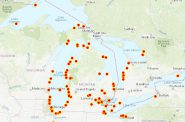 Dec 3rd, 2019 by Tasia Bass Cont
Dec 3rd, 2019 by Tasia Bass Cont
-
Coal Ash Pollutes Midwest States
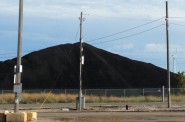 Jun 5th, 2019 by Andrew Blok
Jun 5th, 2019 by Andrew Blok
-
Extreme Changes Forecast for Great Lakes
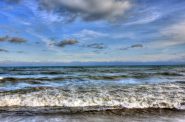 May 21st, 2019 by Cassidy Hough
May 21st, 2019 by Cassidy Hough

